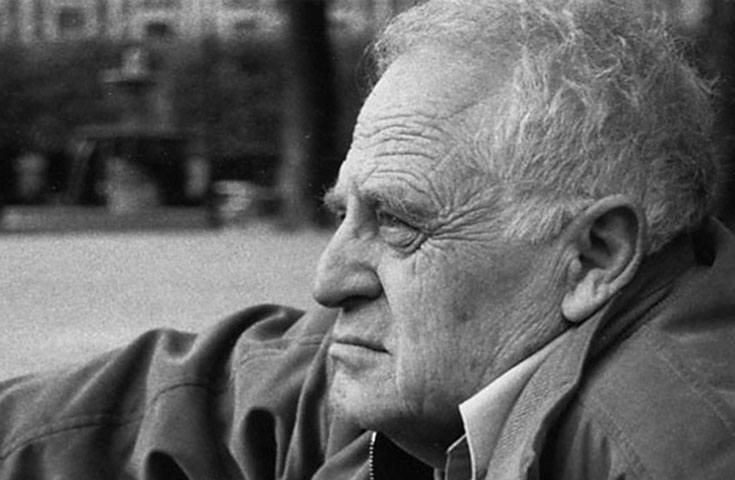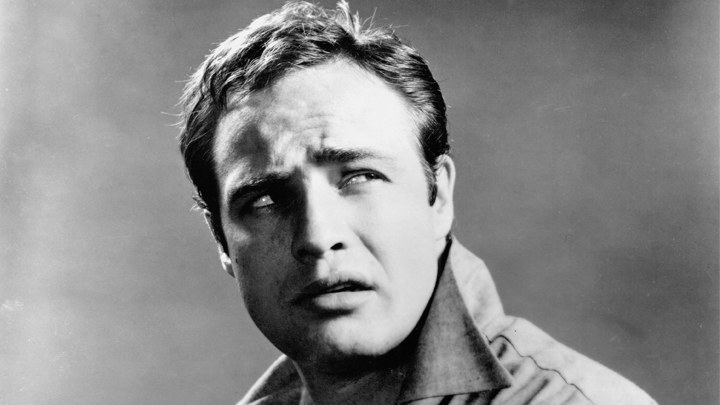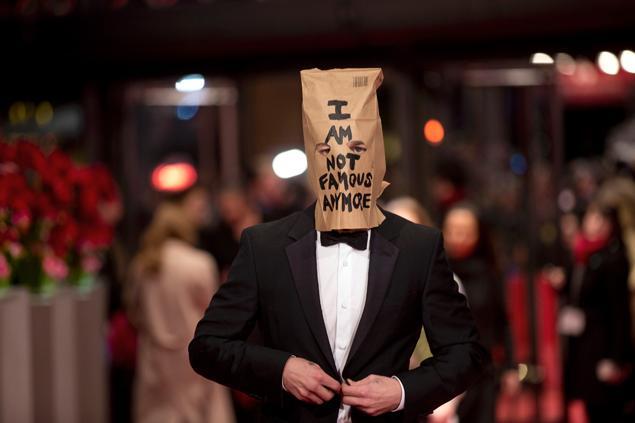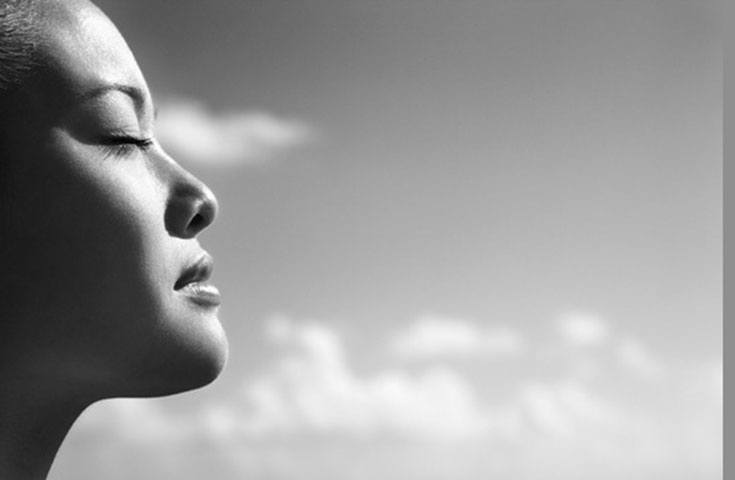
“It’s your own self-serving stuff that gets in the way. You get out of the way of yourself to be able to express what it really is. It’s all about getting back to being free of yourself.”
Where a painter has a paintbrush, a violinist has a violin, you, as an actor, have yourself – your instrument.
Do you remember how free you were as a child? You would let your body, mind and mouth run free without concern for how you were perceived, without reserve or inhibition. Your body, your instrument, was free.
Locking It Up
Children have no problem expressing themselves. They have no trouble letting you know how they feel or using their imagination, and they do both with enviable gusto.
At some point in our lives, as we make the transition from child to teenager, teenager to adult, we lose this precious ability. First, our parents start to tell us not to be ‘silly’, school-friends and peers mock us for believing in Santa Claus, and self-consciousness sets in with a vengeance.
Unwittingly, we start to impose shackles on our acting instrument. Freeing that instrument when you reach adulthood and embark on an acting career is one of the greatest challenges for any aspiring actor. An actor must go through a reconditioning process, to rekindle their imagination and learn how to express a full spectrum of emotions all over again.
It may seem like a contradiction, but before you can master your instrument, you must first set it free. Method acting techniques are your best tools.
Freeing Your Instrument
“You must allow yourself to feel free and express ALL the time. If you don’t, your bad habits will run riot and destroy your performance when you go on stage or set.”
The Ultimate Guide to Method Acting
To start the reconditioning process, you must ask yourself 3 questions on a daily basis:
- How do I feel right now?
- How am I expressing myself?
- Could I express myself more?
Just as few of us use the full breathing capacity of our lungs, most of us use only a fraction of our expressive ability. Asking yourself these questions, and adopting a more conscious approach to self expression will help your reach the outer edges of your expressive spectrum. It’s all about learning to express yourself to the full in a variety of situations.
Scream, shout, cry, laugh, punch, kick – Let it out!
As you begin to express yourself to the full, you will begin to realise how much you have suppressed, and you’ll probably feel happier, too.
There are a series of method acting exercises that can help you free your instrument even further. Some of these have been covered in my blog, but if you would like to read more about freeing your instrument, or any other aspect of training in method acting, pick up a copy of my new book, the first ultimate guide to method acting.
Do you want to be able to wow people in auditions?
Brian Timoney’s Method Acting Manual
Develop your skills and confidence at home before you take the next step in your acting journey
Brian’s New Book!
A practical step-by-step guide on how to make your acting powerful, moving and utterly believable using the method

As if the BFI “Birth of the Method” screenings throughout October and November weren’t enough of a treat for anyone interested in method acting, they have more in store for us at the end of the month! On 27th November, gifted veteran director of the method generation, Jack Garfein, will be in person and in conversation at the BFI Southbank.
Reflecting on a life in a concentration camp, training as an actor at Lee Strasberg’s Actor’s Studio and working with Hollywood legends like Marilyn Monroe and James Dean, Czech-born Garfein will talk in detail to film archivist, author, historian and programmer Clyde Jeavons about the Method and the legendary talent it created.
Who is Jack Garfein?
“Holocaust films? Pah! They’re awful. They always show the horror, not the human element.”
Such is Jack Garfein’s commitment to exploring the emotions and motivations of character in his work as a director of the method.
Jack Garfein was born in the Carpathian Mountains of Slovakia in 1931. At 13, he was sent with his family to Auschwitz. As the only survivor of his family, he travelled to New York shortly after the war and began his life in drama. Despite knowing no English, and with fees paid for by the United Jewish Appeal, he studied at Lee Strasberg’s Actor’s Studio, the breeding ground for the “Italian street actors” Brando, Newman and Pacino.
In 1951, he joined Elia Kazan’s recently-formed Actors Studio as a director, and made his Broadway debut in 1953 with End as a Man. He made two acclaimed films soon after – The Strange One and Something Wild – and launched the careers of actors such as Ben Gazzara and Carroll Baker (whom he later married).
Garfein was no stranger to the stars of the Method. He was on first name terms with Hollywood legends Marilyn Monroe and James Dean, and produced two Arthur Miller plays.
“I had a wonderful relationship with him [Arthur Miller]. We spent a lot of time talking about divorces”
Showing no signs of abandoning the craft to which he dedicated his fortunate life, Garfein still teaches acting in New York and Paris at the ripe old age of 84.
How Do I Attend?
Jack Garfein joins the BFI in person on Thursday 27th November at the BFI Southbank at 6.20pm. Tickets can be purchased online here.
Get in quick, we think this will be a very popular one! Go along and hear tales of life in a concentration camp, a voyage to a new life, and training and working with some of Hollywood’s greatest actors, producers and directors, as well as insights and advice on method acting, and what it take to make it in this industry.
Would you like to follow in Jack Garfein’s footsteps and train in the Method? We are the UK’s leading method acting school, and offer a range of courses to suit all needs, budgets and time commitments.
Please get in touch!

The BFI is staging a series of screenings in London throughout October and November to celebrate the birth of method acting in Hollywood. For past, present or future students of mine, or for anyone interested in Method Acting, it is not to be missed!
The Birth Of The Method
In the 1950s, a new generation of actors burst on to the scene, bringing with them a revolution in acting techniques – The Method.
Under the guidance of Lee Strasberg in the legendary Actors’ Studio, famous names from Marlon Brando and James Dean to Shelly Winters and Paul Newman became a radical new generation of Method actors shifting acting paradigms in Hollywood.
They were the first high-profile actors to explore the deep, inner psychological motivations of their character, and use their own experiences to forge a deep connection with their character through techniques like “sense memory” and “emotional recall.” They laid the foundation for the unique brand of Method Acting we see in Hollywood today.
A BFI Celebration
Throughout October and November 2014, the BFI are holding a serious of events to celebrate the birth of this American brand of method acting, under the title “Birth of the Method: The Revolution in American Acting.”
Through the Sight & Sound “Deep Focus” programme, the transformative years in which American theatre and cinema came together and method acting began its meteoric rise in Hollywood, will be commemorated in a series of screenings.
Complemented by a special feature in November’s edition of Sight & Sound magazine, the event will celebrate the rise of method acting, a revolution that sparked iconic performances from the likes of Marlon Brando and Al Pacino, and brought us 80% of Best Actor Oscar winners since 2000.
The programme kicks off on Saturday 25th October with a screening of the 1950 film The Men, the screen debut of the father of modern method acting, Marlon Brando. The BFI describes it as a “standard-setting, deeply empathetic performance as a paralysed and embittered WWII veteran”, for which Brando prepared, in true Method, by spending a month on a paraplegic ward.
On November 7th, 14th and 29th, you’ll get the chance to see the “definitive Method film” on the big screen. Marlon Brando’s “brilliantly nuanced” performance in On the Waterfront isbelieved to have set the bar for every great American performance since.
You are truly spoilt for choice, with a full list of great and powerful performances from some of the best method actors that ever lived. Watch Montgomery Clift’s quiet determination in Wild River, John Cassavetes’s twitchy method style as a drifter in gritty, ground-breaking film The Edge of the City, or blue-eyed Paul Newman’s convincing performance as a tough Italian-American boxer in Somebody Up There Likes Me. Newman famously prepared for this role by shadowing the real Rocky Graziano for weeks, an immersive process that has been used repeatedly since by method actors from Robert De Niro to Daniel Day Lewis.
For a full list of screenings, and to get your hands on tickets, click here.
To Enjoy 2 tickets for the price of 1 for any event in the BFI’s Birth of the Method: The Revolution in American Acting season , simply quote “Actors 241” on line, in person or over the phone (020 7928 3232).
And if that’s not enough to satisfy your deepest method acting cravings, the BFI will be hosting veteran director of the Method generation, Jack Garfein, in conversation on 27th November at 6.20pm. For full details, and to book tickets, click here.

Shia LeBeouf
In a recent article in The New Yorker, Richard Brody asked whether method acting is destroying actors, citing the late Phillip Seymour Hoffman, Joaquin Phoenix and Shia LeBeouf (pictured) as examples.
Brody argued that the act of linking experiences and emotions from our own lives with those of a character, and playing a character by imagining a filled-out life and becoming the part “asks too much of performers”.
We wanted to address this issue with our readers and students, and ask; is the depth and authenticity of Strasberg’s school of method acting too much for actors?
The Method in Extremes
The Method has produced some of the greatest performances on stage and screen living memory. The act of delving into our deepest emotions of a character, to live and breathe their backstory and persona, and feel what they feel has produced authentic, powerful and hard-hitting performances.
80% of Best Actor Oscars have been awarded to method actors.
Method acting has become defined, therefore, by the high profile, well-publicised interpretations of some Hollywood actors.
We are familiar with how Adrien Brody prepared for The Pianist by practicing piano for four hours a day, how Robert De Niro and Joe Pesci lived and trained together for three months in the lead up to Raging Bull or Daniel Day Lewis’s unique approach to role preparation.
In the premature deaths of celebrated method actors like Phillip Seymour Hoffman and Heath Ledger, and the bizarre or unusual behaviour in public and private of the likes of Shia LeBeouf and Joaquin Phoenix, critics have found reason to criticise the Method. They have said that excavating painful memories or experiences from their past to fill out a character is damaging to actors, and had a part to play in their downfalls.
“Heath refused to talk to anyone out of character. If you tried to communicate with him normally instead of The Joker, he would just ignore you”
Christopher Nolan on Heath Ledger in The Dark Knight
Becoming The Part
“Brando’s performances revolutionized American acting precisely because he didn’t seem to be “performing”, in the sense that he wasn’t putting something on, as much as being”
The Method is a set of tools, which accomplished actors must learn to master. It allows you to, for a brief time, become the character. As long as you can compartmentalise, and affectively harness the tools of the Method, there is clear value in disappearing into a role. There is a danger, though, in taking it to extremes.
If you would like to know more about Method acting, why not read my book? It is the first step-by-step guide to method acting.

“An actor’s job is to “feel on cue.””
Every great actor uses their own lives to the full, and constantly exercises their emotional muscles.
One of the most daunting and challenging parts of being an actor is portraying extreme emotions on cue. In auditions, on stage and on screen we are called upon to cry for imaginary relatives, grieve the breakdown of imaginary relationships or get angry at imaginary betrayals.
Most of us use emotional recall from our own lives to achieve as close as possible to how our character might behave. We recollect in our minds heartbreaks, losses or betrayals in our own past lives, and try to conjure the emotions in our performances.
Using memories in this way does not always produce authentic performances, though. It is very difficult to recreate a memory. Effective and believable emotional recall in performance is only achieved through one of the core elements of the Method, Sense Memory.
What is Sense Memory?
“Everything we perceive, interpret, and ultimately feel in life is filtered through our five senses”
Everything we experience in our day to day lives – sounds, smells, feelings, sensations, tastes – is stored in our subconscious using sense memory. These dormant sensual memories, when exercised effectively by the Method actor, can act as triggers to effectively recall emotions.
Sense memory can help to release certain emotions that are locked away. It is the act of revisiting a single image or sense memory to unlock the emotions that surrounded it.
For example – imagine your character is holding vigil at the bedside of a dying relative. You might want to use your own experiences of hospitals, death and grief to inform your performance. Rather than trying to conjure directly the emotional journey that you went on, try to focus on a single sense memory – a ticking clock in the hospital for example, or the sound of the life support machine.
Or maybe your character is engaged in a bitter argument with their partner over a betrayal. Have you ever has a similar argument? What do you remember of the scene? A television in the background? The smell of a meal cooking? A particular song?
Training
Sense memory is at the core of acting. If you can master it, you will be able to create much more authentic, wide and powerful performances. Practice conjuring emotions through sense memory, you will be surprised by the results!
It is important to relax mentally and physically before starting any sense memory exercise. You must clear the space necessary for a response to a sense memory before you begin with the exercise.
Start with a simple sense memory, and with each exercise build on the complexity until you have a spectrum of emotions in the bank. Soon, it will become second nature to use sense memory in your acting.
Sense memory, when mastered, is one of the most powerful tools in the method actor’s arsenal.
If you would like to know more about sense memory, or the various techniques involved in method acting, why not read my book?

“Act with your scars”
Shelley Winters
“Affective memory” technique is probably one of the most well known method acting exercises. It is widely used by Hollywood actors, whose extreme interpretations have been well documented. For some critics, it is genius, for others, dangerous.
‘Affective memory’ is the act of delving into your own past experiences to add truth and humanity to the pain, suffering and fear of a character. It is an extremely effective technique in which actors find a parallel in their own lives with the character arc of the role they are playing.
How Does It Work?
Once you are relaxed, sit in a chair and begin to relive the past experience that you believe will help with your character. Try to remember as many details as possible about the event – Where did it take place? What were you wearing?
Dig deeper, and try to remember the sensory elements of the experience – what did the place look like? What was the weather like? What did the clothes feel like? How did they smell?
It is important that you recreate the sights, sounds, tastes and smells of the event in as much detail as possible.
At this stage, we are not trying to recreate the emotions that you felt at the time. The hope is that by remembering every sensory element about the experience, the same emotions that you felt then will be naturally triggered.
Sometimes the emotions can be quite unexpected. Often they can be disturbing and traumatic.
Be Careful
“I felt very much at home with the sadder side of Tommy, but it’s not a territory I need to dwell in”
Some of the experiences we need to draw on using the “affective memory” technique can be painful. They are also very powerful. This means it’s important to understand how to use the technique in detail. It’s not for dabblers, you need to master the technique to be able to us use it in a safe and effective manner.
Given the powerful effect of reliving traumatic experiences from your past, we recommend exploring ‘affective memory’ for the first time in the secure environment of a method acting class.
If you would like to explore the “affective memory” technique, or any other aspects of method acting, why not take one of our courses?

